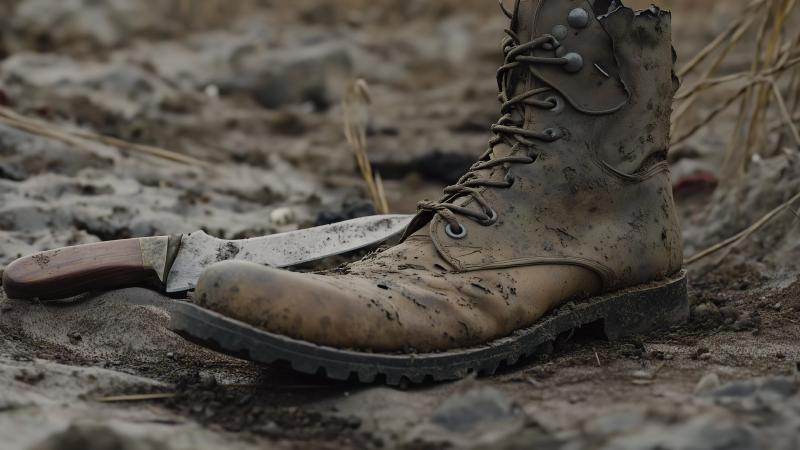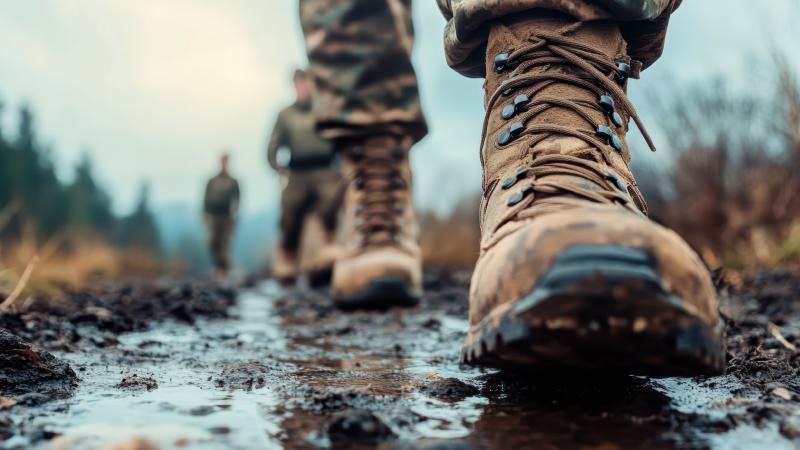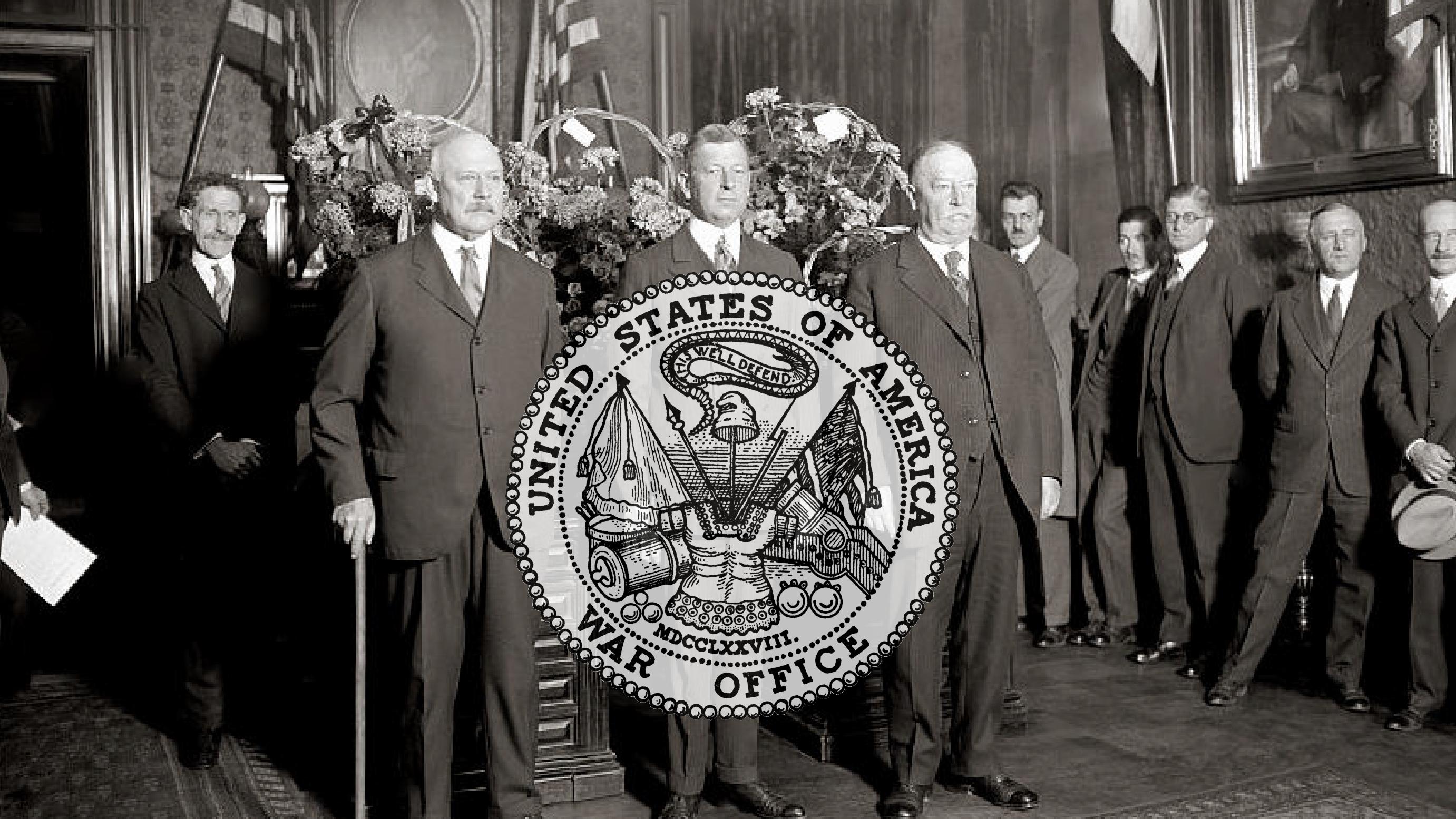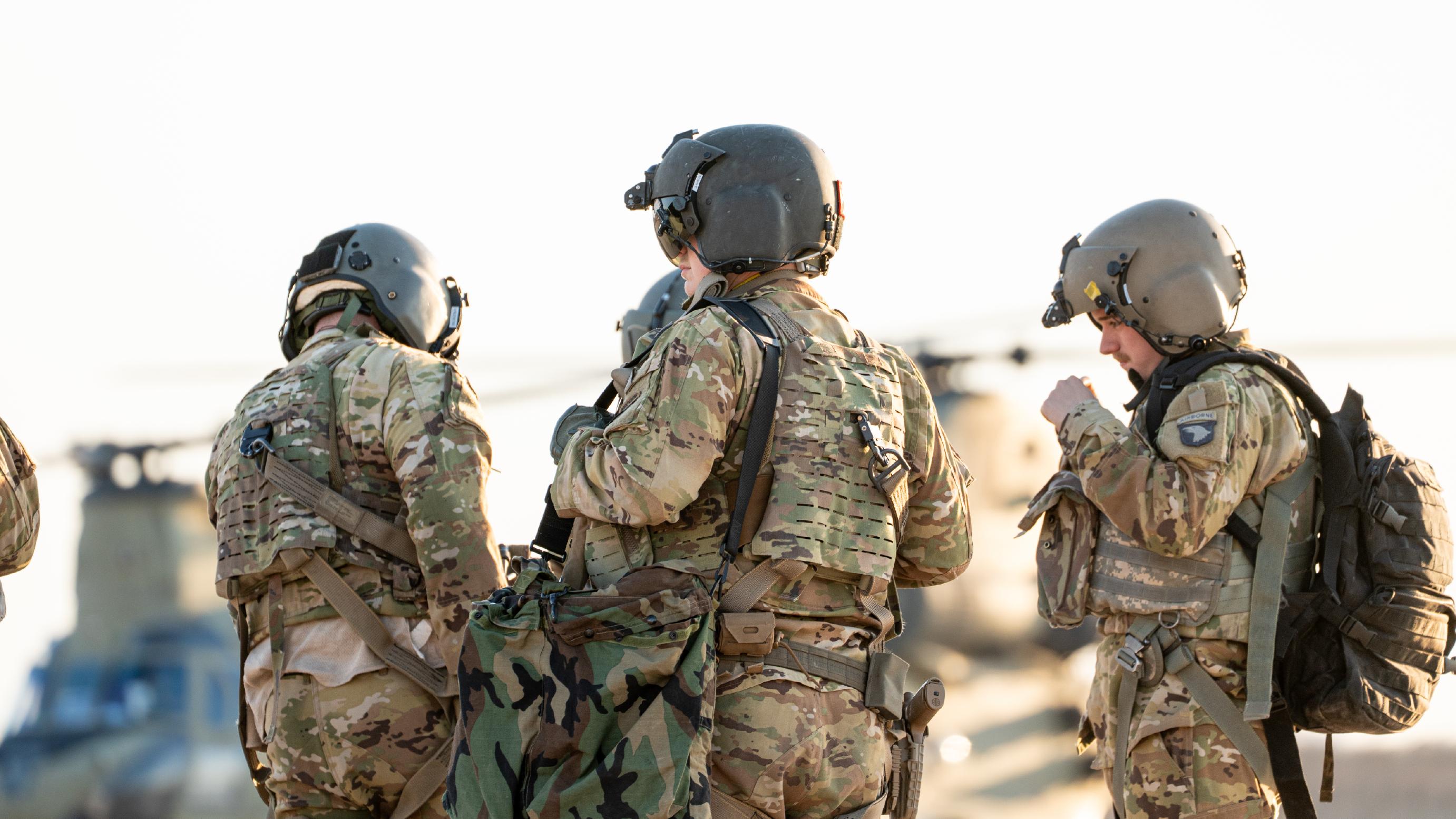MARCHING THROUGH TIME: THE FASCINATING HISTORY OF COMBAT BOOTS

When you picture military gear, what comes to mind? Maybe it's a helmet, rifle, or a pocket knife. While those items are essential, we’re taking a closer look at the evolution of another type of gear, combat boots.
Over time, military boots have marched through every major war, have handled all kinds of rough ground, and have evolved in many surprising ways. If you look back in time, you’ll see that each version was shaped by what came before, making them better suited for the mission.
While combat boots today are one of the most important pieces of equipment that a Soldier possesses, it wasn’t always the case. Today, we are exploring a topic that is not usually talked about: the origins of military footwear, and how it evolved into the boot of today.
The Origins of the First Military Boot
Soldiers have worn combat boots since the Ancient Assyrians and Romans. During that era, shoes were made of soft leather, with pieces of animal bones used as fasteners.
Diving deep into the history of combat boots, the ancient Romans would wear Caligae boots, which often had open toes or heels to enhance maneuverability. These boots were more vulnerable in battle, as they were exposed while in combat, unable to provide full protection for the soldiers’ feet.
As time progressed, Soldiers in the English Civil War were given three pairs of soft leather ankle boots with rawhide soles and leather straps. They would often wear a different pair for every march to ensure they wore out at the same rate.
During the 1600s going up until the 1800s, military boots possessed great similarity to civilian shoes, but had buckles instead of ties.
However, during the American Revolutionary War, footwear was not provided. This led to a great deal of issues as Soldiers were left to source their own footwear. Oftentimes, Soldiers experienced foot-related injuries due to the cold temperatures.
With Soldiers battling the elements, and left with subpar shoes, there quickly became an urgent need for improved footwear.

Footwear Began to Evolve During the Civil War
By 1812, Soldiers were issued the Brogan boots – the most common type of shoe worn by Soldiers during the Civil War. They were ankle-length, making exposing the legs. They were too commonly too tall to be a shoe, and too short to be a boot.
Not long after, the Jefferson Boot was introduced, which was adopted from the Brogan boots in 1851. Named after President Thomas Jefferson, as he was known for wearing similar lace-up style boots.
The boots had a distinct quality in that there wasn’t a left or right foot. Instead, they would slowly mold to the shape of the wearer’s foot as they were worn.
Troops would also often march dozens of miles a day wearing the Jefferson boots, but with poor-quality footwear, it led to foot injuries and infections. Although they were somewhat uncomfortable, they still provided durability and functionality for the Soldiers.
WWI Popularized 2 Different Boot Styles
From the mid 1800’s up until the start of WW I, Hessian style boots became extremely popular. They were knee height, and had buckles on the back of the leg keeping them snug.
However, this design presented difficulties, including limiting a Soldier's range of motion, and inhibiting their ability to run. In response to the problems that the Hessian style boots brought in the early 1900s, a new boot was created.
Military Boots for Different Conditions: The Russet vs. the Pershing Boot
The Russet boot, given its name because of the use of russet leather, was easy to polish, but didn’t provide protection from the elements, specialty water and mud. Due to prolonged exposure to the elements, Soldiers suffered from Trench Foot.
Trench foot was blamed on the shoes Soldiers wore, as the wet leather would shrink, pressing on the foot and causing swelling. Many Soldiers attempted to combat trench foot by layering thick socks, but this only worked to an extent. As a result, thousands of Soldiers died from complications from trench foot, and many looked to a new footwear design.
Despite an improvement, the shoes were still not quality enough. Thus, the Pershing boot was born. The Pershing boot was named after General John J Pershing. It eventually became known as the trench boot, because they were worn by Soldiers who were in trenches on the front lines.
The Pershing boot had a distinct design, with an iron plate in the heel and a tanned cowhide sole. This made them more protective than previous footwear designs; however, they were not perfect, as the problem of trench foot prevailed.

WWII Introduced a Slew of New Designs
By World War II, more shoe options were introduced:
- Garrison Shoe: The primary footwear in WWII, but there was a shortage of materials, so they couldn’t sustain the quality of the shoe. Before the war, it was used as a garrison and field boot.
- The Iconic “M-43” Service Boot: This new design featured roughout leather upper for waterproofing, and a rubber sole and heel. The new boot had additional length options, as Soldiers complained about the leggings they wore conflicting with the boot.
- Jump Boots or Paratrooper Boots: A point of pride among airborne troops, as they were high-laced and featured reinforced toes and heels. Paratrooper boots were one of the few styles designed for a certain task. Paratrooper boots were solely manufactured by Corcoran Shoes, and quickly paratrooper and Corcoran became synonymous.
After World War II, the military continued to develop boots that could handle different environments.
- Mickey Mouse Boots (Korean War): These boots were oversized, insulated white boots designed for sub-zero conditions, helping to prevent frostbite.
- Jungle Boots (Vietnam War): Perfect for heat, humidity, leeches, and sharp punji stakes. They were made with canvas sides for ventilation, rubber soles for grip, and steel shanks on the bottom to prevent punctures from bamboo traps.
- Desert Combat Boots (Operation Desert Storm): These boots were a tan suede, created with breathable nylon panels, and helped soldiers stay cooler during long patrols in the hot, sandy deserts.
21st Century’s Military Boots
As generations continue to evolve, today’s combat boots are a far cry from the stiff leather of the past. Boots are now specialized depending on the mission.
There are versions for hot weather, cold weather, mountain operations, and flight crews. The polished black leather boots once worn with dress uniforms are now replaced by tan or coyote brown boots that match the modern camouflage patterns. They’re also lower maintenance and better suited for today’s operational needs.
The history of combat boots is a reflection of the U.S. military’s journey, and each pair tells a story of a time, a place, and a Soldier. And just like the other Soldiers who wear them, these boots continue to adapt to whatever the mission demands next.
Read next:
- Military Slang & Phrases That Only Veterans Will Understand
- The U.S. Army Camel Corps Was a Real but Strange Chapter of Army History
- The Navy’s Marine Mammal Program Trains Dolphins & Sea Lions to Protect the Seas
Sources:



